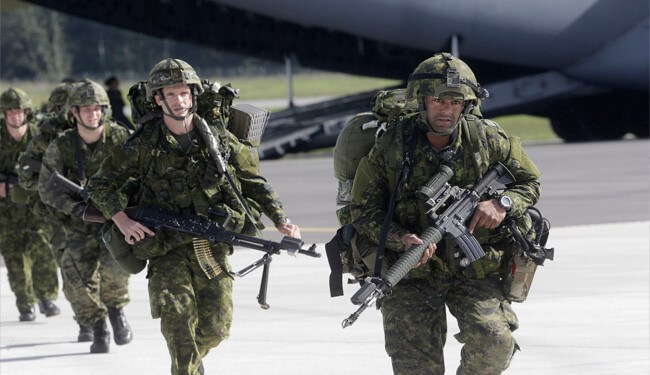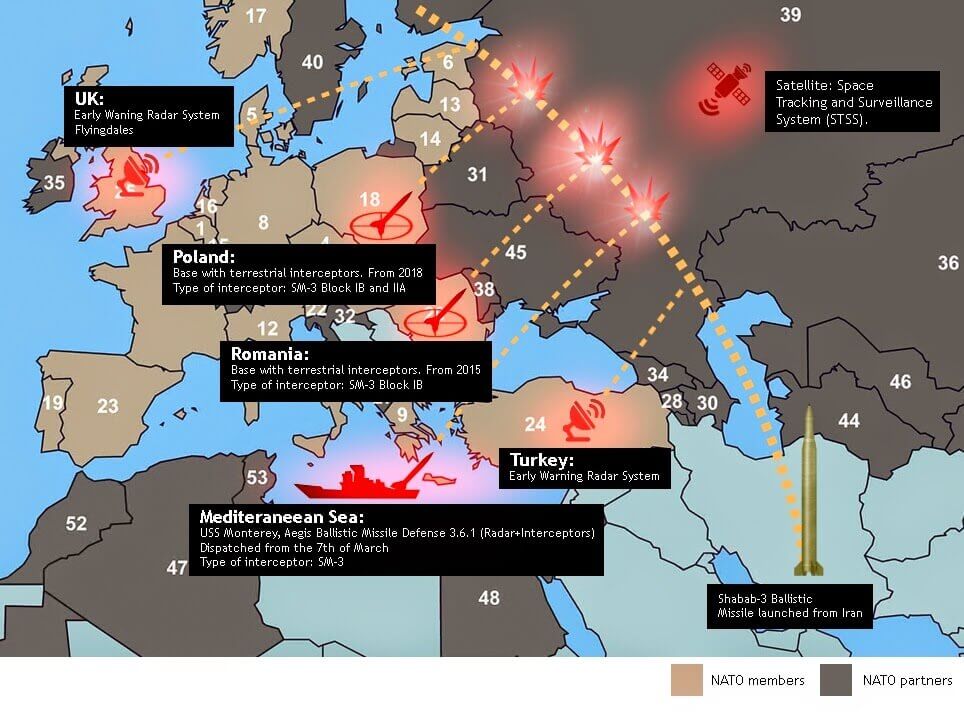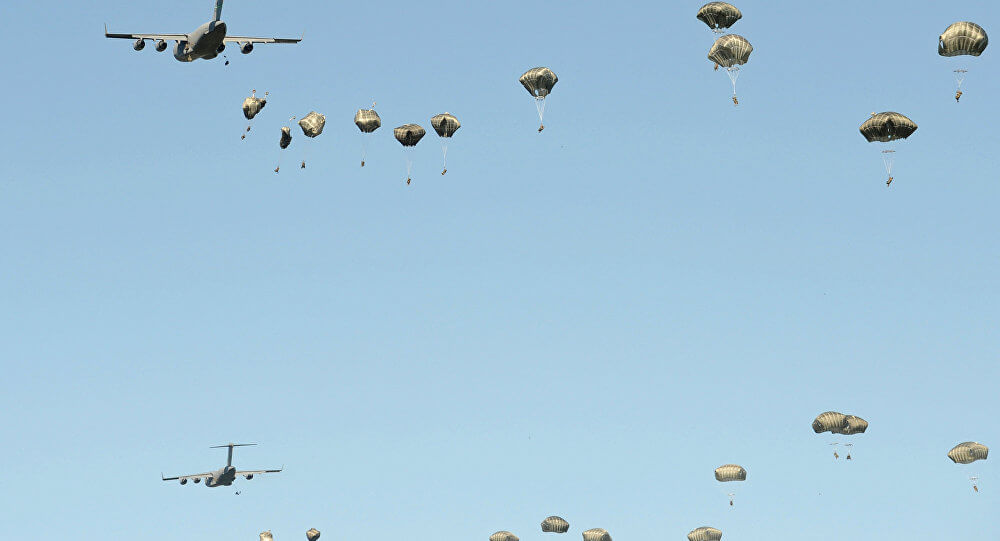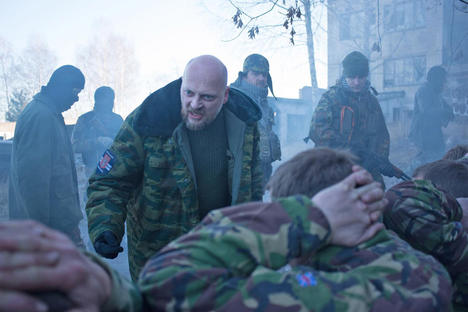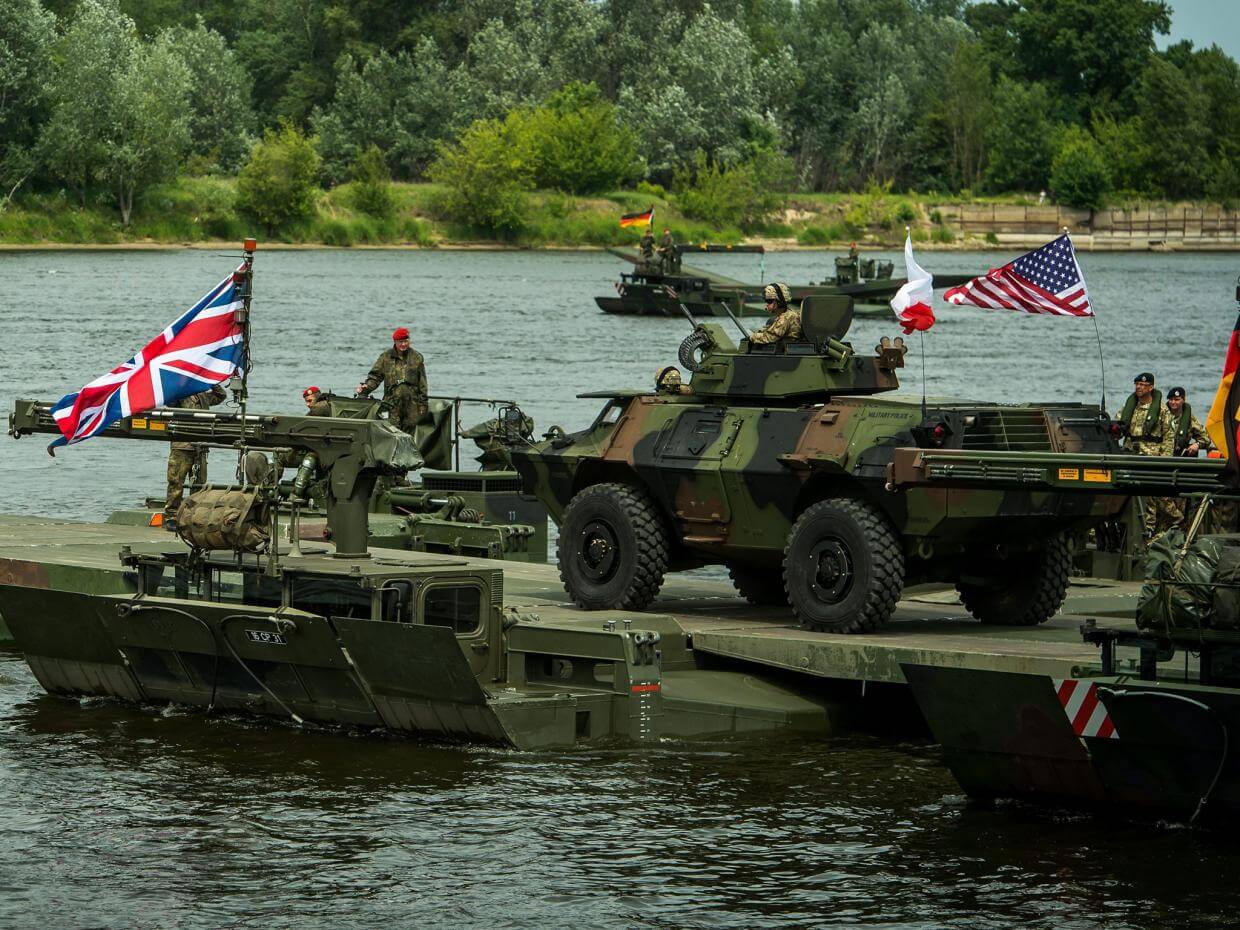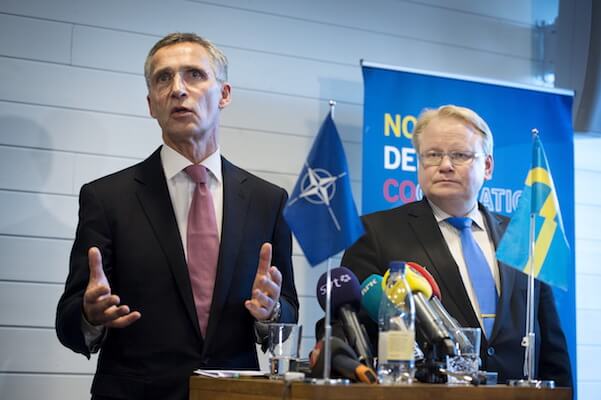Putin’s “Threats” to the Baltics: a Myth to Promote NATO Unity
by GARY LEUPP
In his book 2017: War with Russia published a few months ago, former deputy commander of NATO Sir Alexander Richard Shirreff predicts that to prevent NATO expansion Russia will annex eastern Ukraine and invade the Baltic state of Latvia in May 2017. Most dismiss the book as sensationalist fantasy, but it draws attention to the fact that NATO is in fact aggressively expanding, and holding large-scale war games in Romania, Lithuania, and Poland, and Russia is truly concerned.
Why Latvia? Shirreff is not alone in trying to depict Latvia and the other Baltic states (Estonia and Lithuania) as immanently threatened by Russia. The stoking of Baltic fears of such are a principle justification for NATO expansion.
The argument begins with the assertion that Vladimir Putin (conflated with Russia itself, as though he were an absolute leader, a second Stalin) wants to revive the Soviet Union. His occasional comment that the collapse of the USSR was a “catastrophe” is repeatedly cited, totally out of context, as proof of this expansionist impulse. It continues with the observation that there has been tension between Russia and the Baltic states since their independence in 1991. And while Russia has never threatened the Baltic states with invasion or re-incorporation, the fear mongers like to conjure up Sir Richard’s World War III scenario.
So it’s not difficult to understand why NATO, in its largest war games since the end of the Cold War, would choose Poland, which borders both Russia (the Kaliningrad enclave) and Lithuania, as their setting. Dubbed Anaconda-2016, the ten-day exercise involves 31,000 troops from 24 countries including non-NATO members Kosovo, Macedonia and Finland. Germany, whose foreign minister Frank-Walter Steinmeier has actually criticized the exercise as “saber-rattling and warmongering,” has sent 400 military engineers but no combat troops.
This follows the June announcement that NATO would deploy four multinational battalions (about 4000 troops) in the Baltic states and Poland to “bolster their defenses against Russia.” The idea is that Russian actions in Georgia in 2008 and in Ukraine since 2014 show that Russia poses a grave threat to European security.
It doesn’t actually. Its military budget is one-twelfth of NATO’s. It has no motive. Russia has responded to the unrelenting expansion of NATO to encompass it with stern words and defensive military measures but calm and ongoing appeals for cooperation with nations it (despite everything) continues to refer to as “our partners.”
But since the Baltics have become the focus of (supposed) NATO-Russian contestation, let’s look at what the problem is all about.
The three states were part of the Russian Empire under the tsars from the 18th century up to the Bolshevik Revolution of 1917. While most of the component parts of that empire soon became Soviet Socialist Republics (such as Georgia, Armenia, Ukraine, Kazakhstan, Uzbekistan etc.), others, including Poland, Finland and the Baltic states gained their independence at that time.
But in Estonia, Latvia and Lithuania, there remained large ethnic Russian, and Russian-speaking minorities, as there are today. In 1940 the Soviet army invaded these countries and incorporated them into the USSR. This was part of a strategy to avoid German invasion through the signing of the “Ribbentrop-Molotov Pact” that also meant the temporary division of Poland. (We can criticize this, as I surely do, but that’s the history.) A year later the Nazis invaded the Baltic republics and the Soviet Union as a whole. But the Soviets won the war, and the Baltics remained Soviet up to 1991.
The Baltic states, never truly happy campers in the Soviet Union, initiated the breakup of the country when, from June 1987, protests in Latvia and Estonia led to demands for secession, which the USSR recognized in September 1991. These demands for independence were generally supported by ethnic Russians in the republics. They no doubt expected that they would retain their longstanding linguistic rights.
(This issue of language rights is a huge problem in the former Soviet republics, including especially Ukraine. But it is little understood nor appreciated by U.S.opinion-makers, especially U.S. State Department officials and their media echo chamber.)
Today the Baltic republics have a population of a little over six million, including about one million ethnic Russians. The Russian figure has declined by about one-third since 1991. It is currently lowest in Lithuania (6 to 14%), and 24-30% in the other states.
The restoration of independence produced a wave of nationalist sentiment that included an attack on existing rights of ethnic Russians, distinguished from the others less by looks than by language. As recently as May 2016 a survey co-conducted by the Estonian and Latvian governments found that 89% of ethnic Latvians and 84% of ethnic Estonians are unhappy with this presence and want the Russians to “move back to Russia,” although many are from families who have lived in these countries for centuries.
In Latvia, the State Language Law (passed in 2000) requires that documents to local and national government, and to local and national state public enterprises, be submitted in Latvian only, as the sole national language. (Earlier they could be submitted in Russian, or even English or German.) Aside from being perceived by the minority as an attack on their own culture and identity, this requirement imposes hardships especially for older citizens who have never mastered the “national” language. A similar situation pertains in Estonia. Protests not only by Russia but by other countries have resulted in rulings against Latvia by the European Court of Human Rights and the UN Human Rights Committee.
Moscow sees itself as the protector of ethnic Russians from Ukraine to the Baltics. This should not be so hard to understand. But that does not mean that Moscow—however annoyed it is by NATO expansion to its borders—has plans to invade its neighbors and spark a general conflagration. NATO in 2013 had 3,370,000 service members in 2013, to Russia’s 766,000 troops. NATO expenditures in 2015 were $892 billion on defense in 2015, compared to Russia’s $70 billion.
The idea that Russia poses a threat to any NATO nation is as plausible as the notion that Saddam Hussein threatened the world with weapons of mass destruction. Or that Libya’s Gadhafy was preparing a genocidal campaign against his own people. Or that Iran plans to use nukes to wipe Israel off the map. These are all examples of the Big Lie.
Wait, some will ask, what about Georgia? Didn’t Russia invade and divide that country? Yes, it did, in defense of South Ossetia, which had resisted inclusion in the Republic of Georgia formed in 1991, fearing its ultranationalist leadership. South Ossetia, inhabited by an Iranian people, had been included as an autonomous oblast in the Georgian Soviet Republic but as the Soviet Union dissolve sought unity with Russia. So did Abkhazia. These two “breakaway republics” had been involved in a “frozen conflict” with Georgia until real war broke out in August 2008, producing a Russian invasion of Georgia and Russia’s recognition of South Ossetia as well as Abkhazia as independent states.
One can see this as tit-for-tat for the U.S. dismemberment of Serbia in 1999 and subsequent recognition of Kosovo as an independent state in February 2008. This act in plain violation of international law, condemned by U.S. allies such as Greece, Romania and Spain, was explained by U.S. Secretary of State Condoleezza Rice as a sui generiscase. Well then, that 1999 NATO war on Serbia has led to more sui generis cases, hasn’t it?
And what about Ukraine? The limited moves Russia has taken there have been in direct response of the U.S.-led effort to incorporate Ukraine into NATO, most notably in backing the pro-NATO (and neo-fascist) forces who pulled off the coup of February 22, 2014. Any support Russia has offered to ethnic Russians in the Donbass opposed to the ultranationalist (and dysfunctional) new regime in Kiev hardly constitute an “invasion.”
It’s all about NATO. Unfortunately, the U.S. masses don’t even know what NATO is, or how it’s expanding. It is rarely mentioned in the mainstream press; its existence is never problematized, or discussed in U.S. political debates (except when Trump says the U.S.’s NATO allies are getting a “free ride”); the fact that its dissolution is not subject to questioning is all very depressing.
But wait, I must correct myself. Stephen Kinzer, a senior fellow at the Watson Institute for International Studies at Brown University, got an op-ed published in the Boston Globe a few days ago, entitled “Is NATO Necessary?” Without calling for its outright abolition, he declares, “We need less NATO, not more.”
But the next day the newspaper website included (as if by way of apology) an op-ed by Nicholas Burns, Undersecretary of State for Political Affairs in the George W. Bush administration and now professor of the practice of diplomacy and international politics at Harvard’s Kennedy School of Government. It’s entitled, “Why NATO is vital for American interests.”
Burns adduces four reasons for NATO’s continuing necessity.
“The first is Vladimir Putin’s aggression — his division of Georgia and Ukraine, his annexation of Crimea, his threats to the Baltic states, and his military’s harassment of US forces in international airspace and international waters.” (In other words, Russia’s restrained response to NATO’s provocations is reasons for NATO to continue, as a provocateur. And what “threats” of Putin can Burns cite? There have been none.)
“The second challenge is a dramatically weakening and potentially fractured European Union, now exacerbated by the possible departure of the United Kingdom.” (In other words, as the contradictions within European capitalism intensify, the U.S. must keep its camp together as—if nothing else—an anti-Russian alliance. What logic is this, other than fascist logic?)
“The third is the tsunami of violence spreading from the Levant and North Africa into Europe itself.” (In other words, when NATO actions result in so much pain in Libya and Afghanistan, and U.S.-led wars to so much chaos in Iraq and Syria that a million people flood into Europe, destabilizing European unity on the question of migration policy, the U.S. needs to be there somehow using the military alliance to hold it all together.)
“The fourth is uncertain and sometimes seemingly unconfident European and American leadership in the face of these combined challenges.”
(In other words, the U.S. needs to instill confidence by taking such actions as the invasion of Iraq that Burns supported as a State Department official, and the Libya slaughter he supported as a Boston Globe op-ed writer.)
Strength. Power. Confidence.
Burns and Gen. Jim Jones (former National Security Advisor for Pres. Obama) “believe NATO should station military forces “on a permanent basis in Poland, the Baltic states, the Black Sea region, and the Arctic,” and that the “US should extend lethal military assistance to Ukraine so that it can defend itself.” As though it has been attacked.
His final point is “that our most complex challenge may come from within the NATO countries themselves. Our strongest link is that we are all democracies. But, many of us, including the United States, are confronting a wave of isolationist sentiment and ugly extremism in our domestic political debates. NATO will need strong, unflinching American leadership to cope with these challenges.”
This conclusion is of course a reference to Donald Trump and his “extremism” in daring to—-among his many inchoate and clueless pronouncements—opine that the U.S. is protecting Europe for NATO, but spending too much money on it, and Germany should do more for Ukraine. It seems a statement in favor of that Iron Lady Hillary, who was so unflinching in her support of the Iraq War, and the Libya regime change, and who is hot to trot to bomb government buildings in Damascus.
